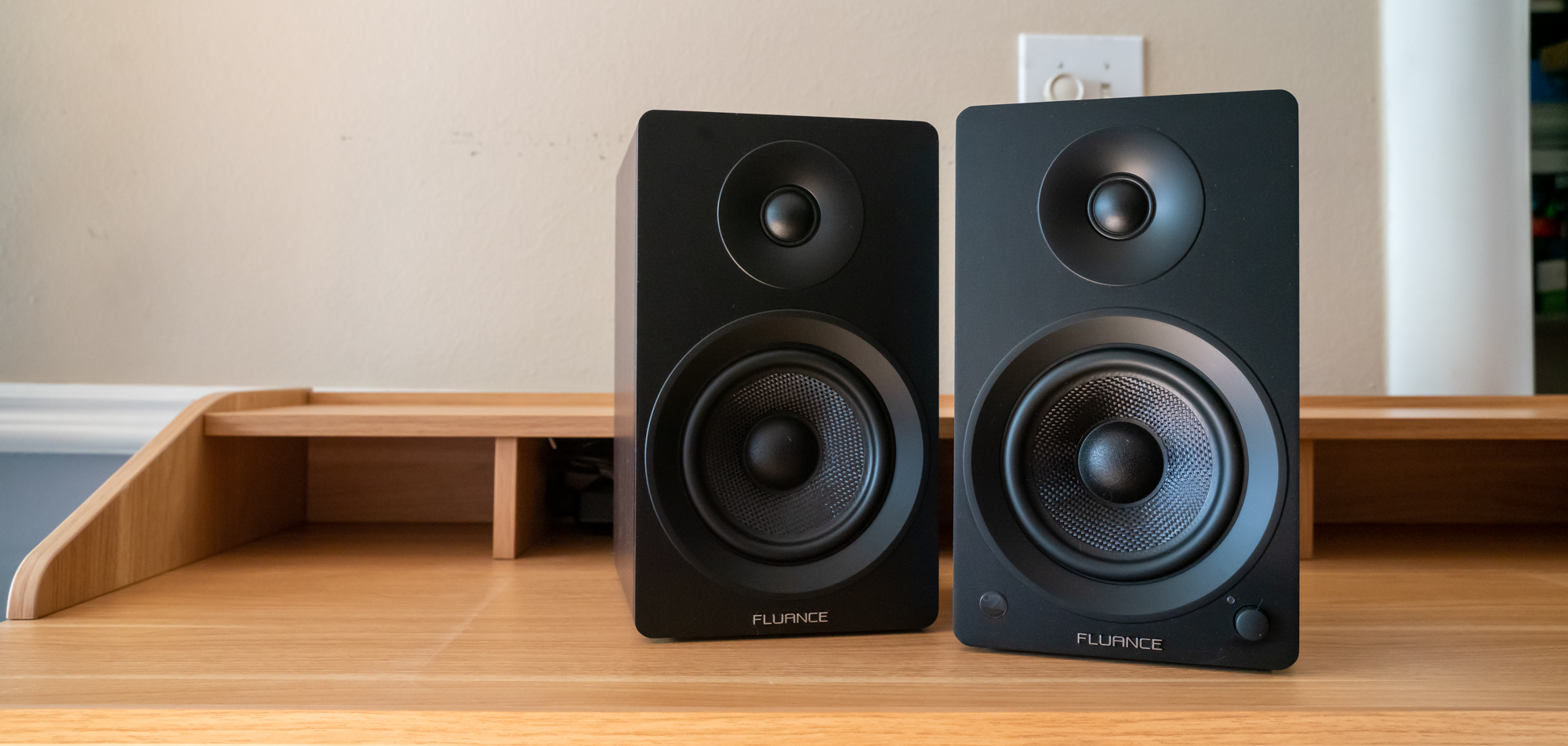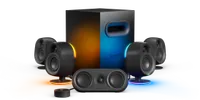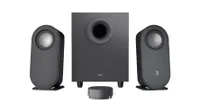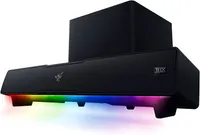TechRadar Verdict
The Fluance Ai41 does what a pair speakers are supposed to do – sound good. With a rich and slightly bright sound signature, not to mention a surprisingly deep bass response, they’re a pleasure to listen to up close. While they may not quite fill out a large space, they’re ideal for smaller setups, especially with all the connectivity options on hand.
Pros
- +
Full, high-mid forward sound
- +
Multiple connectivity
- +
Good value
Cons
- -
No USB or USB-C
- -
Not quite enough volume for large spaces
Why you can trust TechRadar
Fluance Ai41 Speakers: One-minute review
With a good pair of bookshelf speakers like the Fluance Ai41, you can drift away for hours listening to music. And, with all their connectivity, you can also use them to boost the audio of a TV or computer while watching or playing something. However you use them, they shine brightest when they’re up close and personal.
For other applications, they do well enough. If home theater use is your primary purpose, there are other solutions that might fit better. And, if you‘re in the market for one of the best computer speakers out there, the Fluance Ai41 come very close but are still a port away.
That said, the Fluance Ai41 offer a lot of value thanks to their fantastic audio with an extended low end connectivity. So, read on to see if these active bookshelf speakers are right for you.
Fluance Ai41 Speakers: Price and availability
- How much does it cost? $249 (£255, AU$471)
- Where is it available? Available now
- Where can you get it? Available in the US, the UK, and Australia
At $249 (£255 / AU$471), the Fluance Ai41 are firmly in the mid-range. These speakers, which have been around since early summer of 2021, provide a lot of value for the price, even if their features consist mostly of their connectivity options and a remote.
To compare, the Audioengine A2+ go for just a little more but with less power and less bass response. Unlike the Fluance Ai41 however, they come with USB and are therefore slightly more convenient with computer setups.
Of course, you could go cheaper. For instance, the Edifier R1280dB are almost a hundred dollars less and pack quite a sonic punch, especially for the price. However, they don’t have quite as rich of a sound or as deep of a bass response.
- Value: 4 / 5
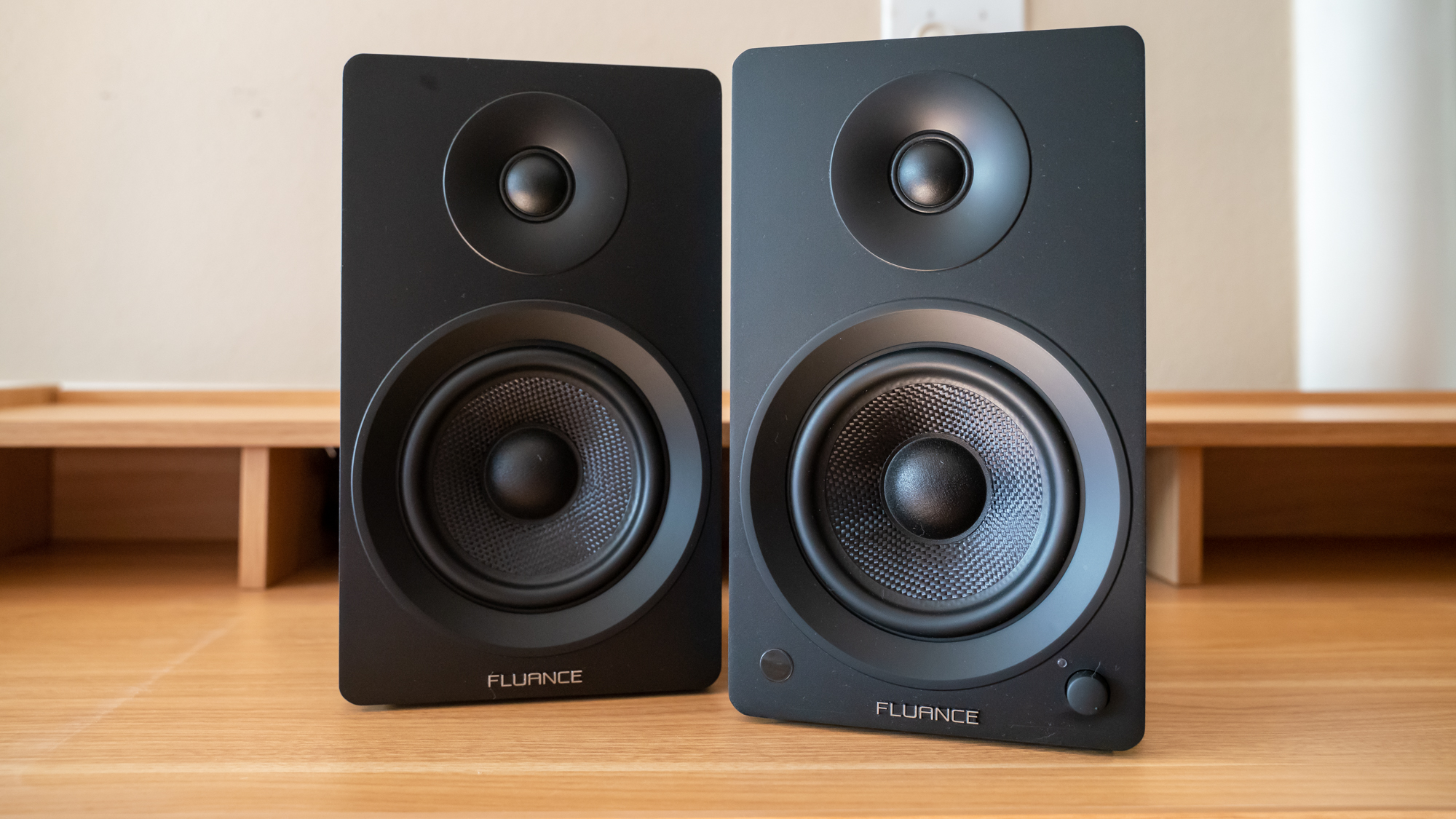
Fluance Ai41 Speakers: Design
- Lots of connectivity available
- USB-C or even USB connectivity would have been appreciated
Bookshelf speakers tend to all share the same DNA, at least on the surface. The Fluance Ai41 are no different. They keep that same rectangular shape with a two-way speaker design and, size-wise, sit somewhere in the middle, measuring 10.9 x 6.5 x 7.6 inches.
Sign up for breaking news, reviews, opinion, top tech deals, and more.
However, you’ll find that these will dwarf most computer speakers out there. They house a one-inch silk tweeter and a five-inch glass fiber composite driver, which is not out of the ordinary for bookshelf speakers. But, most computer speakers come with much smaller drivers.
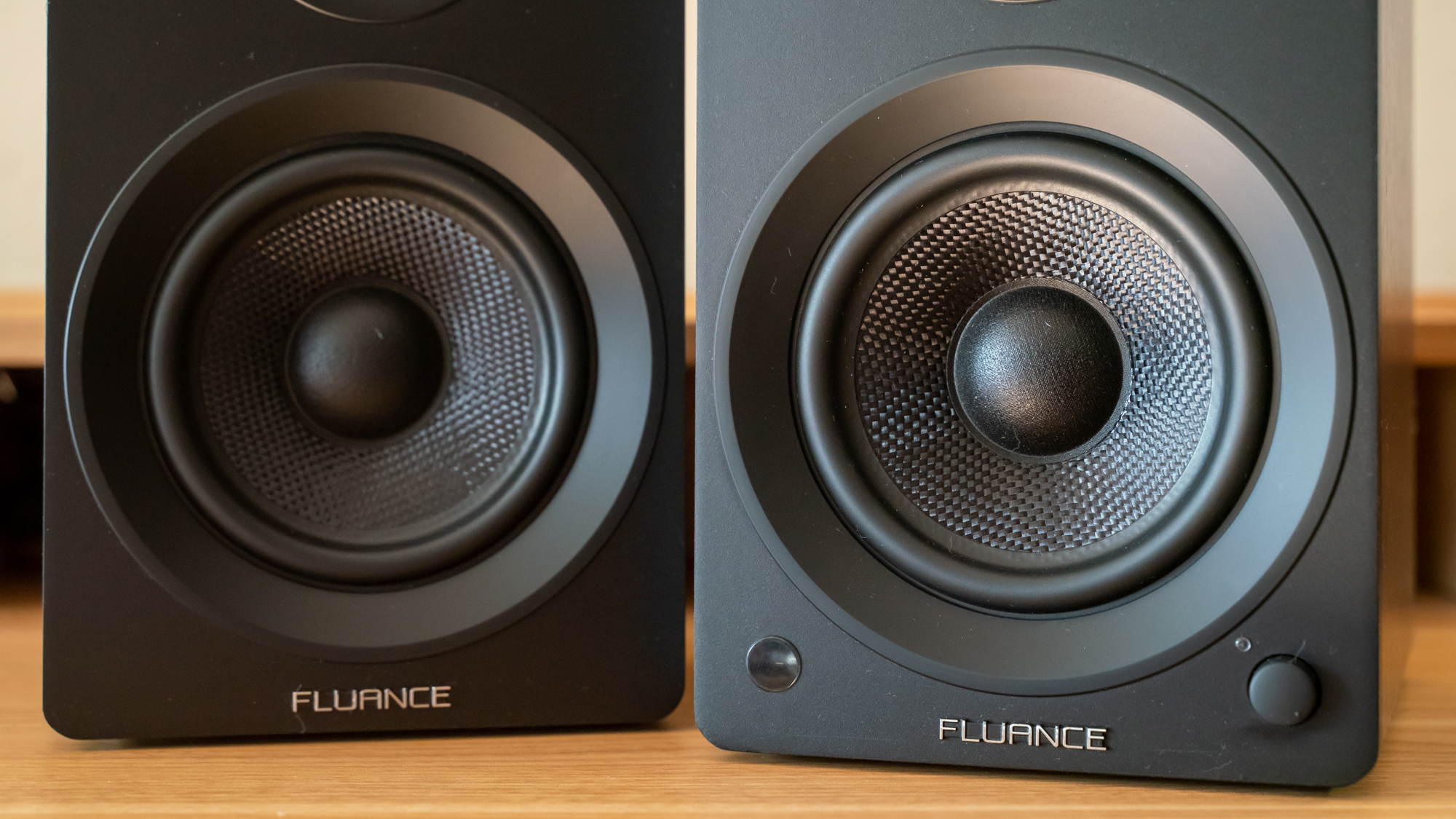
The aforementioned Audioengine A2+ have 2.75-inch drivers, along with 0.75-inch tweeters, for example. Many of them also only house one driver per speaker such as the popular Logitech Z407. And, though the Ai41 will require more deskspace than most speakers designed for computers, they offer a fuller, deeper sound than their rivals.
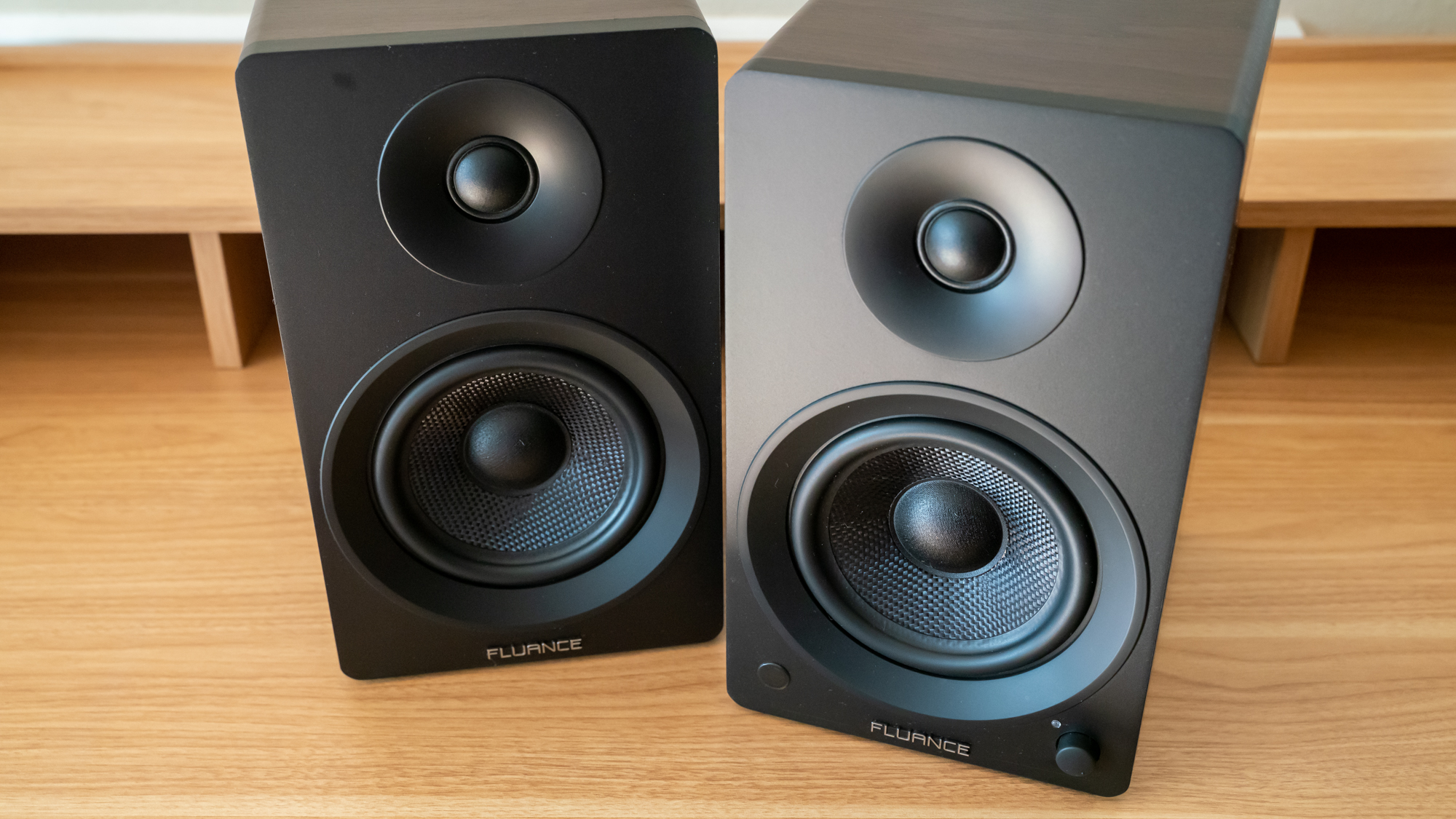
Where the Fluance Ai41 stray from the typical bookshelf speaker design is their lack of speaker grills. While we prefer the look of a speaker without the grill, it does expose the drivers to the elements and potential accidents. At least, the Ai41 come in four colorways including black ash (black cabinet with a black front, natural walnut (walnut stained cab with a black front), white walnut (walnut stained cab with a white front), and lucky bamboo (lighter wood stained cabinet with a white front).
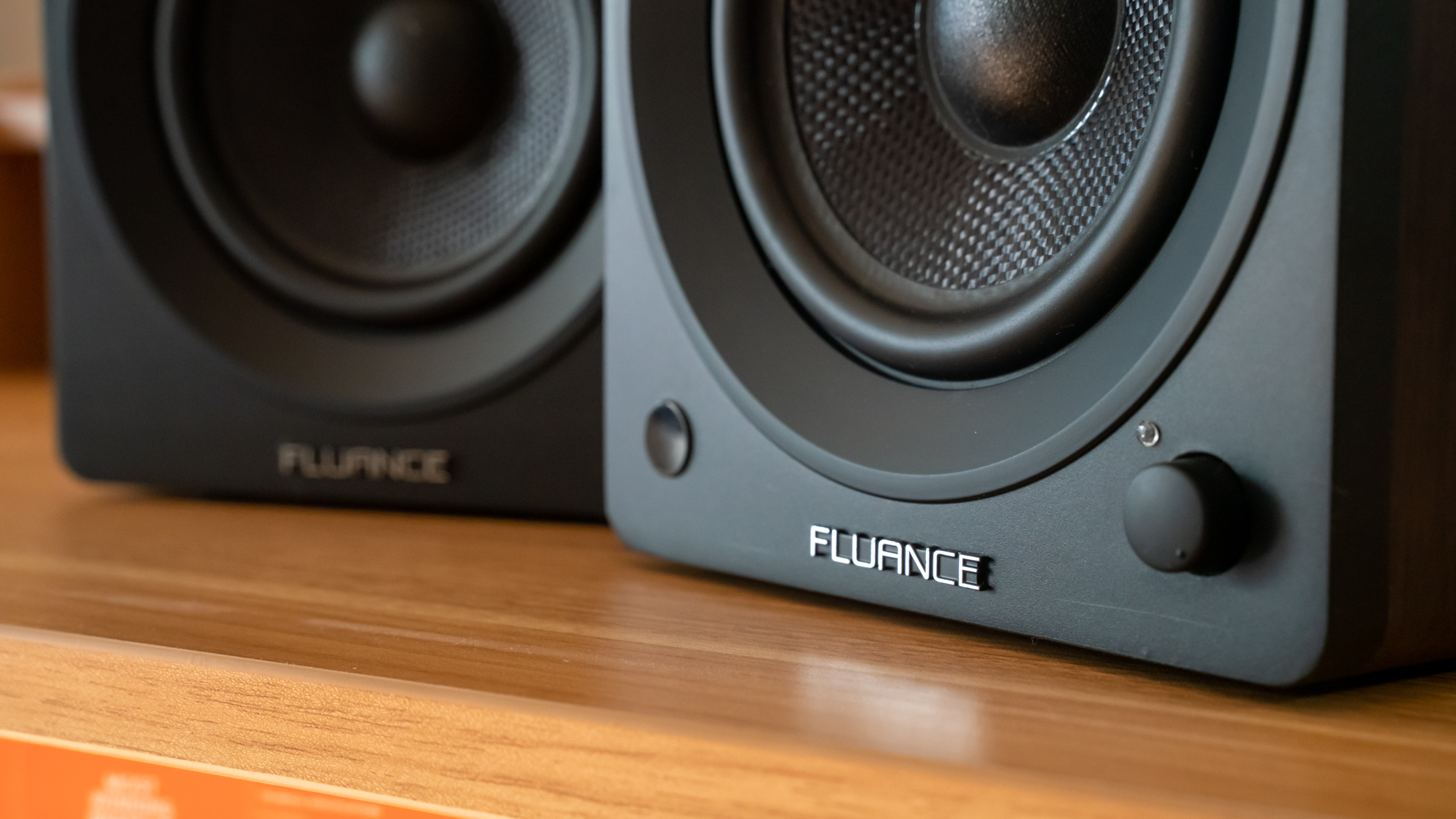
The front right speaker houses the power amp that lets you plug into any source without requiring a receiver. It has a volume dial on its lower right corner that can also be used to switch sources with a quick press or power on by holding it down. There are two additional dials on the back to control treble and bass EQ.
You’ll also find all the connectivity and connectors for speaker wires here as well as the sub out and a Bluetooth reset button. That sub out crosses over at 80Hz so that when you connect the Ai41s to a subwoofer, you won’t be overwhelmed by too much bass. Both speakers are also ported in the back, helping them get that deep low end.
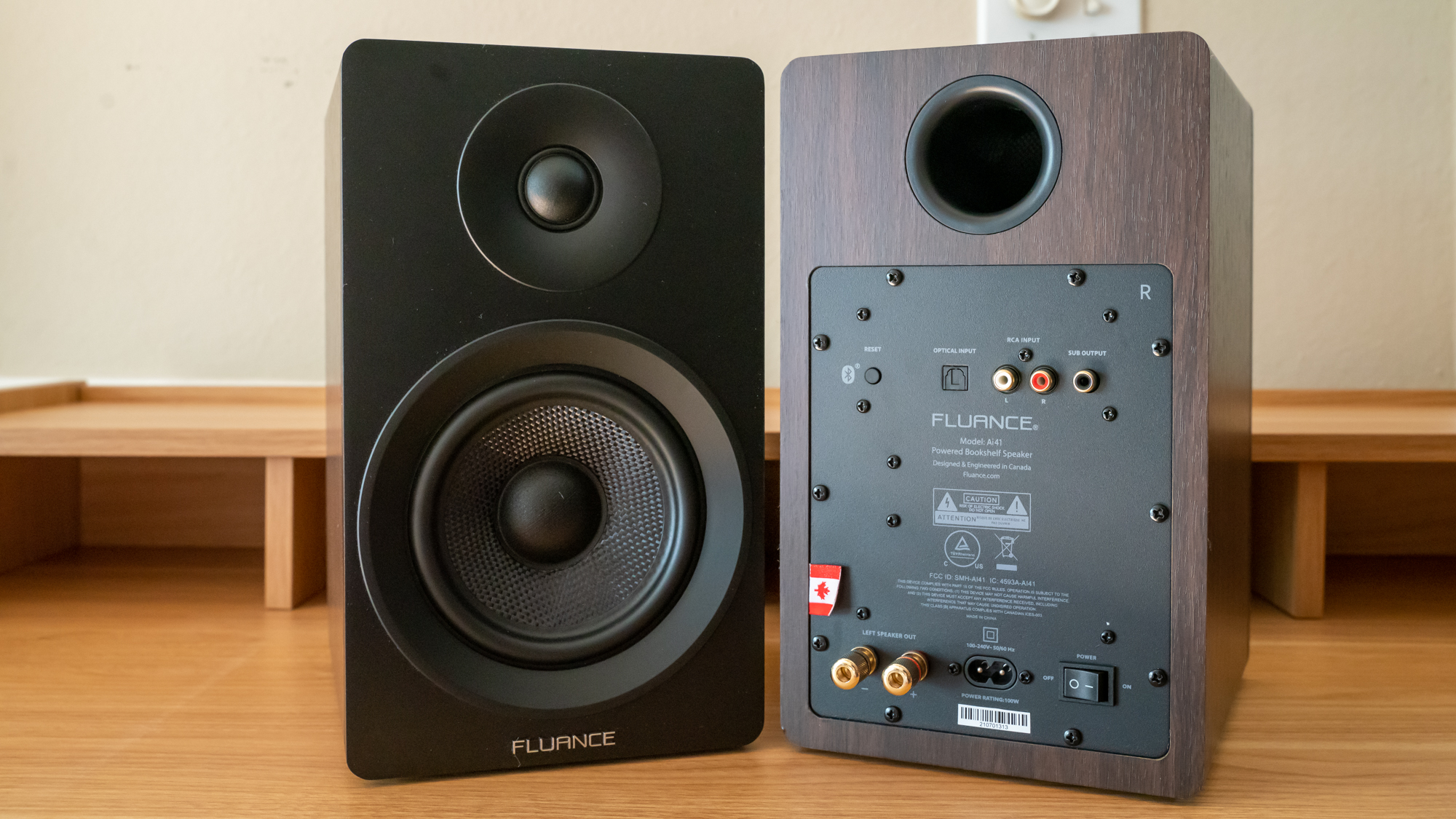
As far as that connectivity goes, there’s optical audio for use with TVs and higher end desktops, RCA input to be used with turntables or with any other device that has an analog out (you just have to use an RCA to 3.5mm cable), and Bluetooth 5.0 that is very easy to pair. In fact, even though Fluance doesn’t advertise any kind of multi-point connectivity, we are able to pair two devices at once and switch sources just by pausing audio on one and playing on the other. We are able to do it with various combinations of sources, including two Bluetooth devices and an analog plus Bluetooth connection.
The only issue with the Fluance Ai41’s connectivity is that there’s no USB or USB-C. We used these speakers with an Alienware laptop for some testing. And, since that laptop doesn’t have an optical out, our only choice was to use an analog connection or Bluetooth. We are able to test with both, with the Bluetooth sounding slightly better than the analog connection – despite a tiny bit of latency.
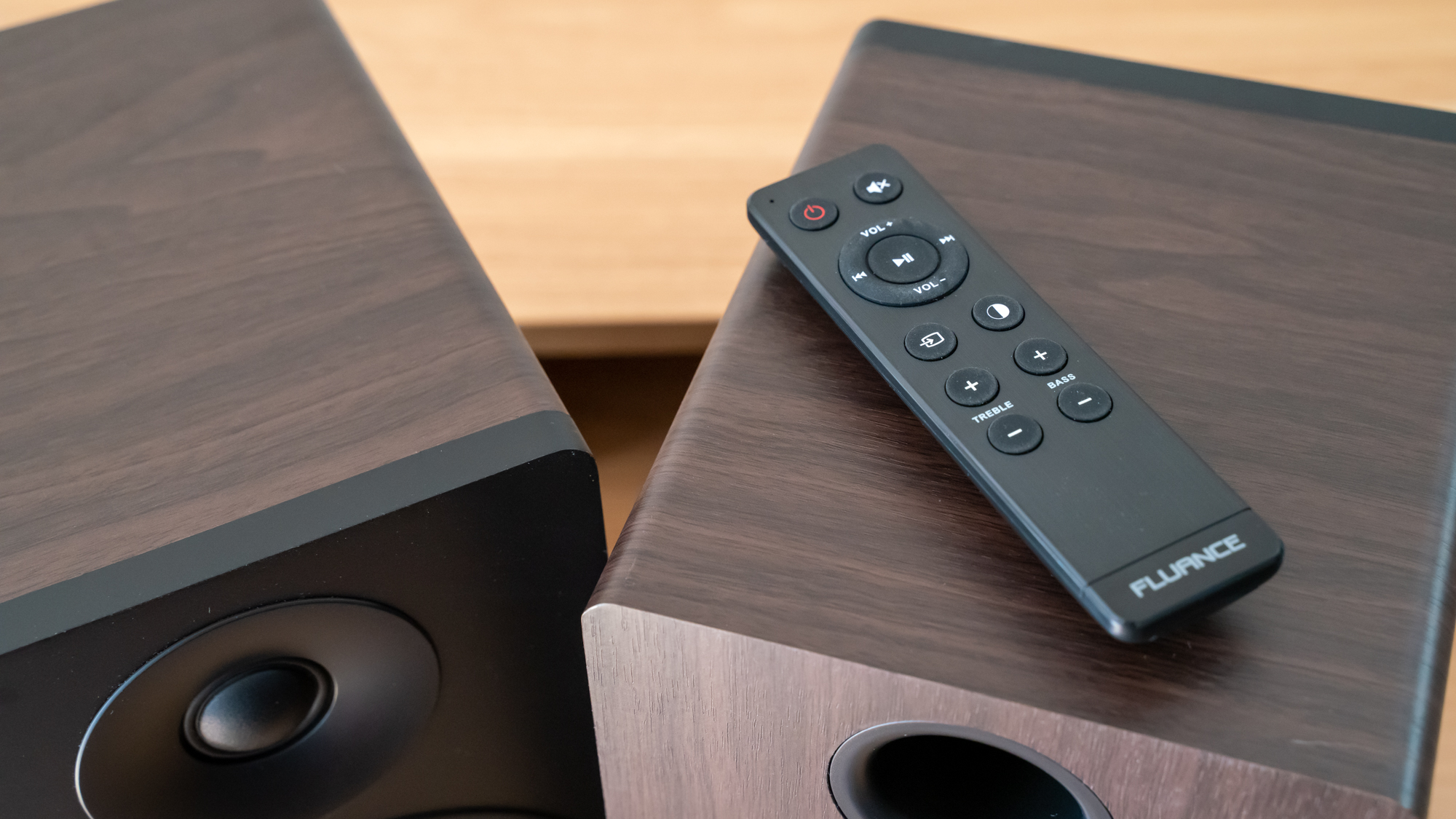
Lastly, the Fluance Ai41 speakers come with a remote. Powered by two AAA batteries, the remote lets you choose input sources, volume, adjust treble and bass, and even dim the power LED. And, if you use Bluetooth, there are controls to let you forward, rewind, pause, and play your audio.
- Design: 4 / 5

Fluance Ai41 Speakers: Performance
- Sound quality is fun, slightly bright, but with deep bass
- There are some limitations for non-music applications like TV and gaming
The amount of volume on tap on the Fluance Ai41 is more than enough for a personal stereo or computer setup. You most likely won’t be turning these up all the way if you’re a foot or two away from the speakers. But, it doesn’t quite have enough volume when used with a TV for a truly cinematic experience. You’ll be able to hear everything clearly. It just doesn’t turn up enough to blow you away.
There’s a reason for that though. The fact that the Fluance Ai41 are ported speakers means that you sacrifice some volume for better bass response. And, its bass response does extend pretty low for a 2.0 system. It's not quite wall-shaking, but it's impressive nonetheless considering there’s no subwoofer. When watching Shang-Chi and the Legend of the Ten Rings, for example, you can still clearly hear all the sub-bass frequencies when the rings are being shot at someone, or there’s some kind of energy blast.
The mids are generally well-balanced though there’s a high-mid bump that does seem to make these speakers sound like they’re rich but also bright. And, the high end is crisp and detailed without being fatiguing. They sound good with everything. Just expect the vocals to pop a tiny bit more than you might be used to.
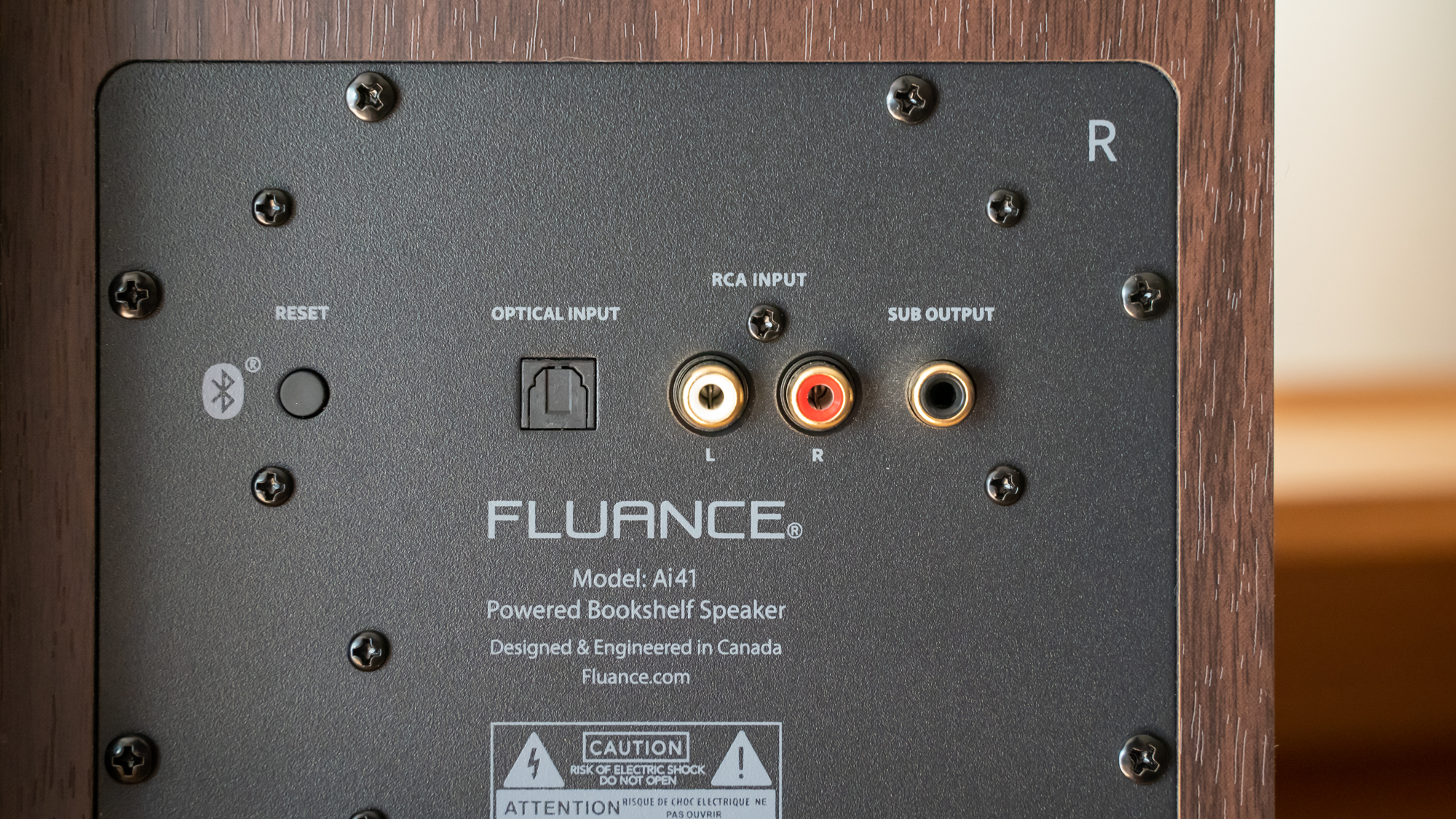
The frequency range is slightly different when connected through the RCA output. And, if you’re using these for a computer setup that doesn’t have an optical audio connection, this is how you’ll most likely be connected to the speakers.
The audio is a little hazier and slightly less defined through this analog connection. That high-mid bump seems to sound a little compressed as well. And, while that more analog sound works well for music, we prefer the cleaner, more detailed sound of the digital connections.
Adjusting the treble and bass controls yields surprisingly subtle changes. The Fluance Ai41 still sounds like itself, just a tad brighter or a tad darker, or with just a little more or a little less bass.
The soundstage is pretty good. We’re able to easily distinguish between different elements and when they moved from left to right or vice versa. That's when positioned close to the speakers such as in a desk setup. When used in gaming, the soundstage is immersive and the sound imaging is fairly accurate.
However, when using the Fluance Ai41 with a TV and sitting back on a couch over six feet away, the sound imaging is less precise. So, picking out elements and where they’re supposed to be is a little tougher.
As mentioned, using Bluetooth introduces the smallest amount of latency. It’s small enough that we are able to watch some shows on Hulu without being distracted, but it's still noticeable.
- Performance: 4 / 5
Should I buy the Fluance Ai41 Speakers?
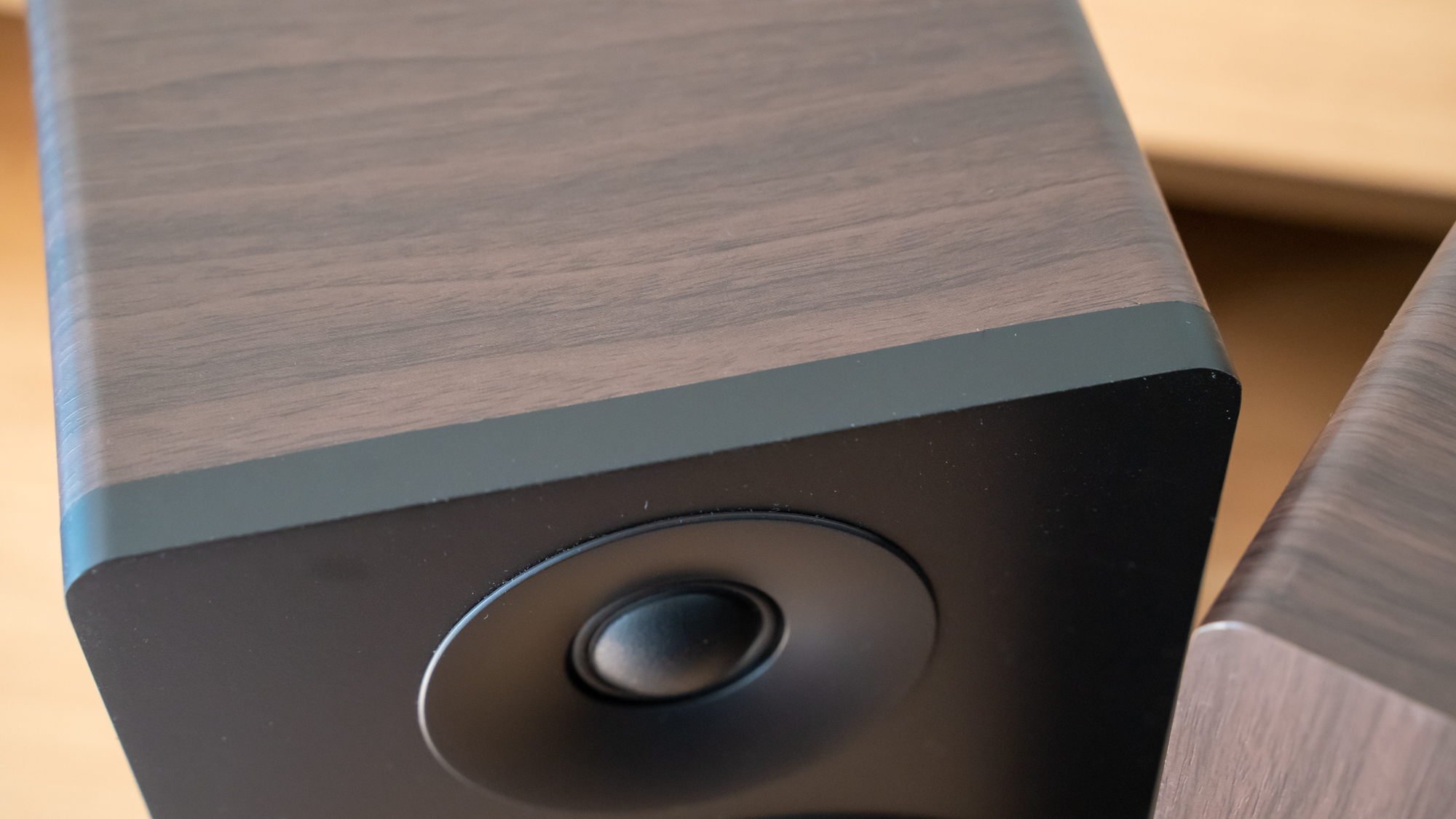
Buy it if...
You want a great personal system
These excel most when you’re a foot or two away from them, leaning back in a chair, and listening to music. If you’re looking for a reason to skip headphones, these are it.
You want good bass out of a minimalist setup
There may only be two speakers, but there’s still more than enough bass available here.
You need a lot of connectivity
With the ability to connect a turntable, a TV or PC, and any Bluetooth-enabled device, you have a lot of flexibility with how you use these speakers.
Don't buy it if...
You need a USB connection
These speakers sound best with a digital connection. Unfortunately, only high end PCs come with optical audio. So, if you’re looking for something to game with and don’t have an optical port, look elsewhere.
You want to fill a large space
While the Fluance Ai41 are adequate for a small TV room setup, they won’t give you enough volume for a more theater type experience.
Also consider
SteelSeries Arena 9
If you’re a gamer, then surround sound is something that you want as part of the experience. Instead of using a pair of headphones, you can get the real deal with the SteelSeries Arena 9. Of course, they cost double the Fluance Ai41, but they come with a total of six speakers including a subwoofer and rear speakers.
Read our full SteelSeries Arena 9 review
Logitech Z407
While the Fluance Ai41 are going to sound a bit better, the Logitech Z407 are the ideal 2.1 system to use with a computer setup. They sound good, have USB connectivity, and take up much less deskspace.
Read our full Logitech Z407 review
Razer Leviathan V2
The Razer Leviathan V2 may not have quite that rich stereo sound that the Fluance has, but it will give you spatial audio even when you’re limited on desk space. And, it’s still able to provide good low end thanks to the included subwoofer.
Read our full Razer Leviathan V2 review
Fluance Ai41 Speakers: Report card
| Value | Though not quite in the budget range, the Ai41 are relatively affordable for what they offer. | 4 / 5 |
| Design | While there’s no USB, there’s plenty of connectivity on offer for most devices. | 4 / 5 |
| Performance | Slightly bright with an extended bass response, the Fluance Ai41 are excellent sounding speakers as long as you’re not trying to fill a home theater or large room. | 4 / 5 |
| Total | The Fluance Ai41 don’t break the bank, work for most small to medium setups, and, most importantly, sound great. | 4 / 5 |
- First reviewed September 2022
How we test
We pride ourselves on our independence and our rigorous review-testing process, offering up long-term attention to the products we review and making sure our reviews are updated and maintained - regardless of when a device was released, if you can still buy it, it's on our radar.

James Holland loves checking out gadgets of all sorts, whether it's audio equipment, laptops, or vacuums (especially of the robot variety), and does so for a number of Future Publications including TechRadar, Top Ten Reviews, Homes & Gardens, and T3. He's built up an expertise for in-depth reviewing over the last four years. When he's not putting in the work on the latest tech, he loves to travel, play music, and eat questionable food.
